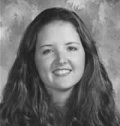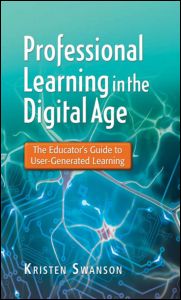Getting Started with Your PLN? Here’s a Helpful Guide
Professional Learning in the Digital Age: The Educator’s Guide to User-Generated Learning
By Kristen Swanson
(Routledge, 2013 – Learn more)

Organized and user friendly, Professional Learning in the Digital Age by Kristen Swanson is an excellent resource for those wanting to take advantage of the Internet for personally directed professional development. I have read multiple books on this topic and this is probably my favorite for new users who may be nervous about entering the world of professional learning networks (PLN).
The book contains chapters on user-generated learning, curation, healthy digital footprints, reflection, and contribution. Throughout the chapters, the author leverages educator cases, face-to-face protocols, research snippets, key ideas, and actionable to-do lists to help teachers move through the process of developing their PLN and justifying the importance of each. Additionally, the book concludes with a tool repository that directs readers to various resources for aggregation, Twitter, blogs, and organizing content.
Healthy networking
One aspect of this book that stands out is Swanson’s dedication to the continuation of nurturing one’s face-to-face community. Throughout the book, Swanson reminds the reader that while developing your professional learning network is beneficial, this should not be at the expense of those around you. In fact, she suggests that you “find a friend” to go with you through this process. Too often, authors ignore the importance of face-to-face connections in books about developing a PLN or becoming a connected educator.
Creating a healthy digital footprint was another aspect of this book that really deserves credit. Having read several books on this topic and explored the concept personally, I am familiar with the idea of digital footprints, but the author reinforced the idea that we not only need to be aware of our digital footprint, but we also need to take control of it. Swanson argues that by contributing and participating in the world of social media, we can ensure that our footprint is a healthy one where we can define our digital identity, rather than allowing others to do so for us.
However, as part of this discussion she promotes the idea of quantity over quality in order to increase the likelihood that our work is referenced most often. By maintaining a continuous online presence, Swanson contends that we can ensure that searches will show our most referenced or most recent work.
While I understand the logic of this approach, I do think that educators should be careful about what information they share and disseminate. There should be a middle ground between these two approaches, which I believe is acknowledged through Swanson’s focus on the evaluation of resources and reflection on the process – though it is not qualified in this particular section of the book.
I always recommend that the preservice educators in my university program maintain two professional educator identities: one that is public and another personal one that is private. As educators we do have a responsibility to certify the quality of the work we disseminate, or at least, if it is shared, make sure it is shared with an explanation as to the degree you vetted the material.
A good book for new networkers
As with all books about technology, before they come to print they can be out of date. Unfortunately this book is no different. Swanson suggested using Google Reader as a blog aggregator. However, Google suspended this service in July of 2013. One alternative is Feedly (www.feedly.com), which has a web-based interface and can therefore be used on all devices. Or you can always search for a “Google Reader alternative” to examine various other options.
Despite this challenge, which is common to all print texts, I highly recommend Professional Learning in the Digital Age, especially for those new to participating in professional learning networks. Once you have completed this book, I would suggest moving to a more research based and somewhat more technical book on learning in the digital age such as The Connected Educator: Learning and Leading in a Digital Age by Sheryl Nussbaum-Beach and Lani Hall.
Dr. Nicole C. Miller is a faculty member in the Department of Curriculum, Instruction, and Special Education at Mississippi State University. She previously worked as a social studies and educational technology teacher/coordinator at a Los Angeles middle school. Her current research interests include middle level teacher preparation and technology integration, including using technology to support teacher learning.


































